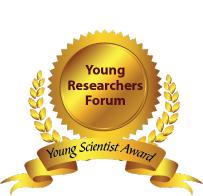Animal Evolution
Life on this earth simply did not start out with animals. All the life on earth started from the primordial ooze where inorganic molecules produced organic molecules, organic molecules formed bigger molecules, and, eventually organic molecules hang together inside membranes. This leads to cell-like structures and then cells. Simpler cells lead to more complex cells. Eventually, and it did take a while, we get the cells that make up animals.
All animals and plants are classified as multicellular eukaryotes: their bodies are made up of large numbers of cells, and microscopic inspection of these cells reveals that they contain a nucleus and a number of other organelles. Compared to prokaryotic organisms such as bacteria, plants and animals have a relatively recent evolutionary origin. DNA evidence suggests that the first eukaryotes evolved from prokaryotes, between 2500 and 1000 million years ago. That is, eukaryotes as a taxon date from the Proterozoic Era, the final Era of the Precambrian. Fossils of both simple unicellular and more complex multicellular organisms are found in abundance in rocks from this period of time. In fact, the name "Proterozoic" means "early life".
- Evolution of vertebrates & invertebrates
- Development of multicellular organisums
- Eukaryotes and Prokaryotes
- Modern mammal groups
Related Conference of Animal Evolution
21th World Congress on Tissue Engineering Regenerative Medicine and Stem Cell Research
16th International Conference on Human Genetics and Genetic Diseases
19th International Conference on Genomics & Pharmacogenomics
Animal Evolution Conference Speakers
Recommended Sessions
- Animal Evolution
- Chromosomal Evolution
- DNA & Protein Substitution
- Driving forces of Evolution
- Genome Architecture
- Genome Evolution
- Molecular Evolution
- Molecular Genetics
- Molecular Oncology
- Molecular Phylogenetics
- Nucleic acid Evolution
- Plant Molecular Evolution
- Protein Evolution
- Role of ribosome and mitochondria
- Transcriptomics
Related Journals
Are you interested in
- 3D Bioprinting, Organ Fabrication & Bioartificial Tissues - Stem Cell 2026 (Netherlands)
- Aging Biology, Longevity Science & Cellular Rejuvenation - Stem Cell 2026 (Netherlands)
- Artificial Intelligence and Computational Biology in Regenerative Medicine - Stemgen 2026 (Japan)
- Bioinformatics, AI Models & Predictive Regeneration - Stem Cell 2026 (Netherlands)
- Biomaterials and Nanotechnology in Regenerative Medicine - Stemgen 2026 (Japan)
- Cancer Stem Cells & Targeted Therapeutics - Stem Cell 2026 (Netherlands)
- Cancer Stem Cells and Oncology - Stemgen 2026 (Japan)
- Cardiac, Vascular & Musculoskeletal Regeneration - Stem Cell 2026 (Netherlands)
- Cardiovascular Regeneration - Stemgen 2026 (Japan)
- Clinical Translation of Stem Cell Therapies - Stem Cell 2026 (Netherlands)
- Clinical Trials and Translational Stem Cell Research - Stemgen 2026 (Japan)
- Commercialization, Biobanking & Industry Innovations - Stem Cell 2026 (Netherlands)
- Ethical, Legal, and Social Implications in Stem Cell Research - Stemgen 2026 (Japan)
- Ethical, Regulatory & Quality Control Frameworks - Stem Cell 2026 (Netherlands)
- Exosomes, Extracellular Vesicles & Cell-Free Therapeutics - Stem Cell 2026 (Netherlands)
- Future Trends: Organoids, Bioengineering, and Next-Generation Therapies - Stemgen 2026 (Japan)
- Gene Editing and CRISPR Technologies - Stemgen 2026 (Japan)
- Gene Editing, CRISPR Therapies & Regenerative Genomics - Stem Cell 2026 (Netherlands)
- Induced Pluripotent Stem Cells (iPSCs) and Reprogramming - Stemgen 2026 (Japan)
- Mesenchymal Stem Cells (MSCs) in Therapy - Stemgen 2026 (Japan)
- Regeneration in Neurodegenerative & Spinal Cord Disorders - Stem Cell 2026 (Netherlands)
- Regenerative Approaches in Diabetes & Metabolic Disorders - Stem Cell 2026 (Netherlands)
- Regenerative Dentistry and Craniofacial Applications - Stemgen 2026 (Japan)
- Regenerative Immunology & Immune Modulation - Stem Cell 2026 (Netherlands)
- Regenerative Medicine and Tissue Engineering - Stemgen 2026 (Japan)
- Stem Cell Banking and Cryopreservation - Stemgen 2026 (Japan)
- Stem Cell Biology and Cellular Mechanisms - Stemgen 2026 (Japan)
- Stem Cell Engineering & Cellular Reprogramming - Stem Cell 2026 (Netherlands)
- Stem Cells in Neurological and Neurodegenerative Disorders - Stemgen 2026 (Japan)
- Tissue Engineering, Biomaterials & Smart Scaffolds - Stem Cell 2026 (Netherlands)

